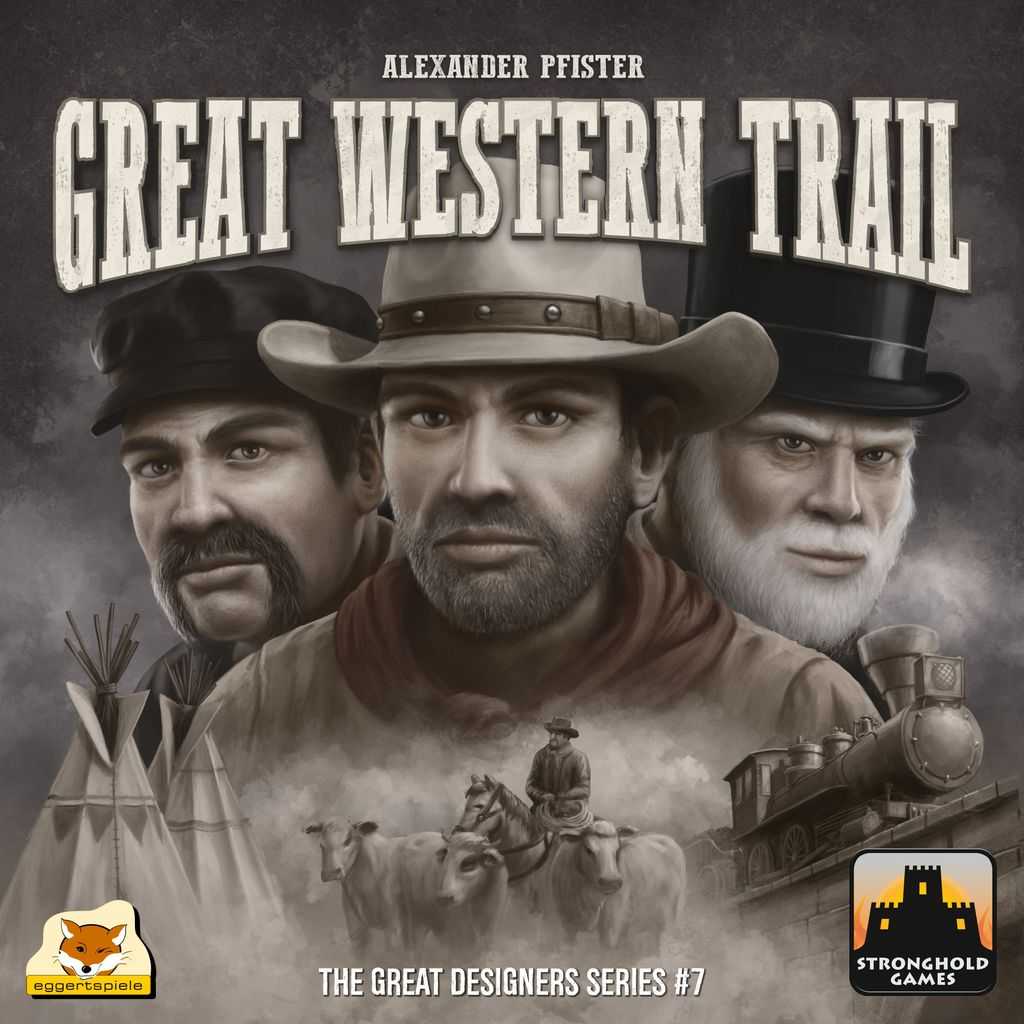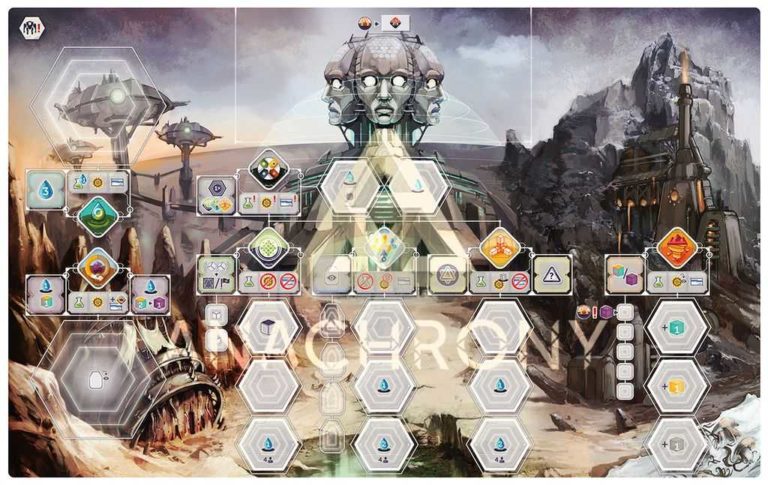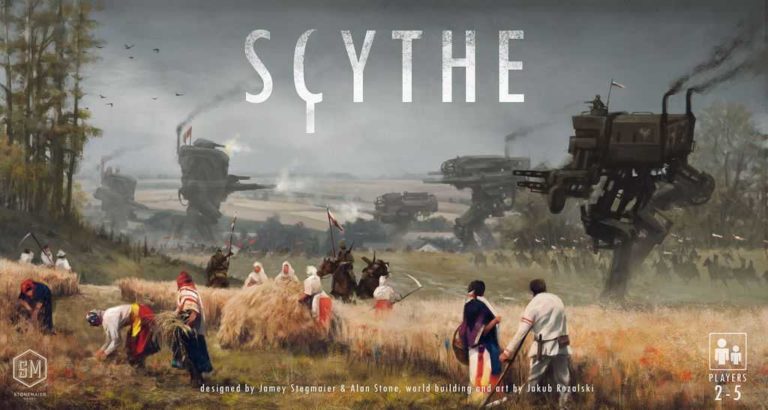Great Western Trail Review: The Ultimate Guide
Great Western Trail Review: The Ultimate Guide
Are you ready to saddle up and delve into the pioneer spirit of the Wild West? Great Western Trail stands as a testament to the intricate craftsmanship of board game design, taking players on a strategic ride through cattle ranching, deck building, and route optimization. This Great Western Trail review is your ultimate guide to not just playing the game but experiencing a slice of the Old West through its mechanics and theme. I remember the first time I unboxed this game; the journey from rookie rancher to trailblazing titan was as alluring as the first golden rays of dawn on the prairie.
Key Points:
- Great Western Trail is a strategic board game that combines cattle ranching, deck building, and route optimization.
- The game simulates the life of a rancher in 19th-century America, herding cattle from Texas to Kansas City for profit.
- It offers a seamless blend of strategy, planning, and adaptability, with nuanced player interactions and a high replayability factor.
- The game’s components are of high quality, with thematic visual design and artwork that enhances the immersive experience.
- It has a learning curve but is accessible with guidance, and it offers scalability and replayability for different numbers of players.
- The second edition of the game brings improvements in artwork, player board design, and overall gameplay, making it a worthwhile investment for fans.
The first thing that struck me was the clever integration of deck-building into a rondel-driven game – a fusion that promised an addicting depth of strategy. It’s a testament to designer Alexander Pfister’s prowess, where every element blends together to evoke a sense of the rugged, untamed frontier. My journey with Great Western Trail has been filled with careful planning, unexpected twists, and the quiet thrill of a well-driven herd reaching its destination.
Through this review, I aim to give you a rich sense of what the game is about, dispel the dust of uncertainty, and bring to light why it has galloped up the ranks to be a modern classic. Whether you’re looking to add it to your collection or just curious about the buzz, let’s take a leisurely trot through the components, gameplay, and the unforgettable gaming experiences that Great Western Trail offers.
The Essence of Great Western Trail
In the heart of modern board gaming, where themes and mechanics spin an endless web of options, Great Western Trail emerges as a beacon of innovation and engaging gameplay. The essence of the game rests in its seamless blend of strategy, planning, and adaptability, wrapped in a rich thematic cloak that transports players back to the times when cowboys and cattle drives were the lifeblood of the frontier. Every time I guide my herd through this game’s nuanced trail, I’m struck by just how engrossing this journey can be.
Overview of the Game’s Theme and Objectives
Great Western Trail casts you as a rancher in 19th-century America, herding cattle from Texas to Kansas City, where they’re shipped off for the best prices. The thematic heartbeat of the game simulates a time when grit and careful planning could elevate a modest herd into wealthy livestock. Your objective is to deftly maneuver your cattle, represented by cards, across a modular board that represents the trail, improving your herd and infrastructure along the way for that profitable game-ending payoff.
As the journey unfolds, you’ll experience the looming presence of competitors, who, like you, are vying for the most lucrative opportunities. Every choice – from hiring staff to improving your herd – not only shapes your strategy but reshapes the terrain of the trail itself. Revisiting the trail becomes an evolving puzzle, with previous decisions echoing in the present, as familiarity breeds not contempt but heightened tactics. This game’s objectives are holistic, engaging players on multiple levels where success is as much about the planning as the journey itself.
Great Western Trail simulates the 19th-century American ranching experience, challenging players to strategically maneuver their cattle across the trail and make impactful decisions that shape their success.
Why Great Western Trail Stands Out in Modern Board Gaming
The allure of Great Western Trail in the sea of modern board games is hard to overstate. It’s not just another game; it’s a deeply immersive experience that grabs hold of your strategic psyche and refuses to let go. The tight integration of deck-building with a physical game board path twists a familiar mechanic into something fresh and compelling. With each cattle drive, I find myself wrestling with an array of strategic options, making every play an addicting quest to refine my approach.
Great Western Trail truly shines in its replayability. The modular board configures with countless variations, mirroring the unpredictability of the Wild West itself. I can’t stress enough how gratifying it is to discover a new strategy or optimize an old one with every playthrough. Add to that the dynamic player interactions – where a competitor’s move might benefit you on the next turn – and you have a game that keeps you on your cowboy boots, eager for the next round.
The game strikes a careful balance between complexity and playability, an equilibrium that allows strategic depth without overwhelming newcomers. It’s a balancing act worthy of the tightrope walkers of old, each component, from the cattle cards to the trail’s stops, working in harmony to create a dance of decision-making. Its standing in the board game community is not just a reflection of its mechanics but an acknowledgment of the stories it weaves during gameplay. It’s a unique narrative every time, keeping players returning to the trail akin to the eternal cowboy drawn back to the open plains.
In-Depth Analysis of Great Western Trail
Dive into the crux of Great Western Trail and it becomes evident that this is more than just a game – it’s an intricate ballet of strategy and decision-making. This Great Western Trail review aims to dissect the layers that make up its essence and explore how every turn is a stitch in the rich tapestry of the gameplay experience.
Core Mechanics and Gameplay
At the start, Great Western Trail feels like stepping into a vast landscape, with the potential for exploration and discovery at every turn. The journey from Texas to Kansas City is the spine of the game, along which players employ a variety of actions to build their deck and optimize their cattle herd. Deck-building functions as the lifeblood of the game – each card symbolizes cattle and serves the dual purpose of currency and progress. Every card drawn can be pivotal, opening opportunities or narrowing choices.
The mechanics are like a well-oiled machine; you recruit staff such as cowboys, craftsmen, and engineers, each enhancing different gameplay elements. Cowboys improve your ability to purchase better cattle, craftsmen build structures that modify the trail, and engineers advance railroad opportunities. There’s also a satisfying sense of progress when you place a structure on the board – it’s like claiming a piece of the Wild West for yourself whilst plotting potential obstacles for your opponents.

The beauty of these mechanics is their nuanced interconnectivity. Just like the cogs of a period locomotive, each decision sets off a chain reaction that reverberates throughout your strategy. For example, taking a detour to hire an additional cowboy may delay your herd’s journey but can lead to acquiring higher-value cattle in the long run. It’s a game that eloquently balances short-term gains with the long view, rewarding both foresight and flexibility.
Strategic Depth and Complexity
Delving deeper into Great Western Trail, it becomes clear that the strategic layers of the game are as complex as the trail is long. Players must navigate not only the physical journey from Texas to Kansas City but the intricate landscape of tactical opportunities and pitfalls that arise. I’ve spent countless hours plotting courses on the game board that not only optimize my turn but anticipate future treks and my opponents’ possible moves.
The strategic depth of Great Western Trail lies in its versatility. Each player’s actions subtly shift the gameplay landscape, meaning that no two games are ever the same. This complexity is multiplicative in nature; the more you play, the more stratagems reveal themselves. From building a diverse herd of cattle to leveraging buildings and manipulating the railway, there’s an ocean of choices, each with ripple effects that can lead to victory or a trail of regrets.
Inside this complexity are layers of decision-making that create a thick latticework of possibility. Timing is critical, as is positional play, and like chess, there’s a beauty in orchestrating a series of moves to clinch a strategic advantage. Players must constantly adapt, whether that’s coping with the randomness of card draws or reacting to the evolving trail shaped by fellow cowboys. It’s a game that not only embodies strategic depth but encourages players to dive in, embrace its intricacies, and emerge ever wiser for the next journey.
Components and Aesthetics
Great Western Trail doesn’t just stand out for its robust gameplay, but also leaves an indelible mark with its components and aesthetics, ensuring that you not only play a game but are also transported to a different time and place.
Quality of Game Materials
One aspect that truly enhances the Great Western Trail experience is the undeniable quality of its materials. Each piece, from cattle cards to player boards, feels substantial and durable, belying countless hours of shuffling, moving, and strategizing. The sturdy cardboard tokens and the tactile satisfaction you get from handling them echo the heft of responsibility you feel as a trail manager aiming for the next profitable sale.
The player boards themselves are practical works of art – thematic in design and functional in purpose. The way they organically integrate into the game, marking your accrued improvements and resources, contributes to a feeling of tangible progression. In a world where some may settle for less, the commitment to quality in Great Western Trail makes each game feel like a special occasion, akin to pulling out your best boots for the county fair.
The quality of materials in the Great Western Trail game enhances the experience, providing a tactile satisfaction and contributing to a feeling of tangible progression.
Visual Design and Theming
The visual design and theming of Great Western Trail serve as a firm handshake to the notions of the Wild West. Bold and rugged illustrations delight the eyes, capturing the essence of the cattle drive experience. Every strategically chosen palette and stroke of art on the board and components ignites the imagination, pulling you into a world where your cattle baron ambitions can run as wild as the frontier itself.
A game’s thematic immersion is paramount, and I’ve always found that Great Western Trail doesn’t just ask you to imagine the setting – it plants you firmly in the dusty boots of a rancher. The attention to detail in the design, from the iconography to the game board’s sprawling paths and trails, acts as a narrative backdrop to the gameplay. It ensures that every decision feels like part of a larger story unfolding across the prairies and railroads of America.
The art is not only beautiful but functional, making learning and playing the game more intuitive. The iconography efficiently conveys information, which, after a few plays, becomes second nature – like recognizing the familiar outline of a trusted steed’s silhouette on the horizon. Such meticulous design supports the game’s complexity by making it more accessible, allowing players to focus on strategy rather than getting bogged down decoding symbols.
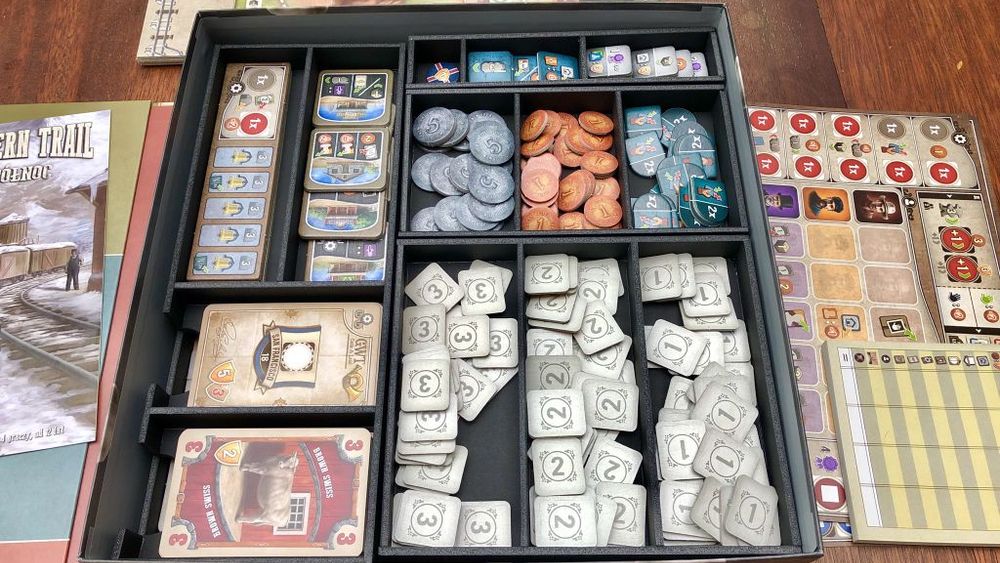
The Learning Curve
The journey of mastering Great Western Trail is akin to learning to ride. At first glance, the challenge may seem daunting, but with guidance and experience, you soon find yourself galloping gracefully along the trail, exploring its strategic landscapes with confidence.
Accessibility for Newcomers
Entering the world of Great Western Trail can feel like stepping onto the bustling streets of Kansas City, brimming with sights, sounds, and opportunities. For newcomers, the game’s depth may seem like a heady frontier to explore, but the beauty lies in how accessible it becomes with a little guidance. Just as a seasoned rancher takes time to break in a new saddle, the game rewards those who invest time in understanding its finer details.
The cardinal rule for easing into Great Western Trail is to approach it with patience. Each element is a piece of a greater puzzle; the mechanics are intricate but not inscrutable. You start by learning the ropes – how to manage your deck, what each building does, and how to use the staff to your advantage. It’s a progressive learning experience, layered but never labyrinthine, as each playthrough sheds light on new facets and strategies to tackle the trail.
In my sojourn with the game, I have found the rulebook to be a trustworthy companion on this journey. Yes, it bears the density of an old-school textbook, but it is also a trove of knowledge, a map to untangle the web of icons and actions. And once the rules are grasped, the gameplay flows with a satisfying rhythm, like the ebb and flow of cattle moving across the plains.
The cardinal rule for easing into Great Western Trail is to approach it with patience, as the game rewards those who invest time in understanding its finer details.
Scalability and Replayability
Great Western Trail flexes with the ease of a seasoned ranch hand when it comes to accommodating different numbers of players and offering an addicting variety each time. Whether corralled with a duo or rounded up with a full posse of four, the game scales to ensure that no cowboy feels out of place. The game board is a living, breathing entity; its setup and the strategies it spawns vary with each new gathering, bringing fresh perspectives and challenges.
The replayability of this game is a testament to its design: each new journey down the trail is beset with different choices and potential strategies. Opting for a building-heavy approach or focusing on railway expansion provides distinctly unique paths to victory. And the more you play, the broader the landscape becomes, revealing deeper strategies, nuances, and the joy of jockeying with fellow players for position.
The Gaming Experience
Strap on your spurs and ready your wits, as we venture into the heart of what makes Great Western Trail a memorable gaming experience.

Player Interaction and Competition
Remember the last time we huddled over Great Western Trail, imagining ourselves as ranchers from the 19th century? There’s something about steering your cattle from Texas to Kansas City that just latches onto your competitive spirit. Player interaction in this game is subtle but pivotal, much like the tense exchanges between rival cattlemen. It’s not only about outmaneuvering everyone on the physical trail but also about strategically placing buildings that can hinder or help others. I recall one session where my friend constantly used my buildings, feeding me those crucial coins that later won me the game. Yet, the competition isn’t direct – it’s more about shadowboxing, feeling out your opponents and staying one step ahead without coming to blows.
In Great Western Trail, competition brews quietly under those wide-brimmed hats. Every decision impacts not just your path, but also the routes taken by your opponents. Timing your cattle deliveries, upgrading your locomotive, and hiring the right staff can feel like setting up dominos – each move affecting the next. One game night, an unnaturally focused silence had fallen over us as we all plotted our course, trying not to give away any hints of strategy. When the game ended, we burst into conversation, realizing how engrossed we’d been in our silent competition.
Chasing scores and climbing the marketplaces offer incentive for shrewd play, but what truly shines is the unspoken battle of efficiency and foresight. Remember when Alexander Pfister, the artist behind the game, made that brilliant move that elevated the strategy? Though we compete for victory points, the shared journey along those trails and rails ensures that every game of Great Western Trail is a blend of personal achievement and muffled contention; a journey that often ends with appreciative nods and respect for the cunning rivals gathered around your table.
The Role of Luck vs. Strategy
Diving into the blend of luck and strategy in Great Western Trail, you’ll find that your fate isn’t left entirely in the hands of chance. Strategy reigns supreme in this vast prairie. Luck may dictate the cattle cards you draw, but a clever player will mitigate randomness through strategic deck-building and astute planning. Remember that night I ended up with a hand full of identical cows? It would’ve been easy to blame luck, but I knew it was poor deck-management that led me there.
While it’s true that elements of luck can sway outcomes, particularly with the card draw, it’s the strategic responses to luck that define a player’s experience. Crafting an effective deck and making savvy use of the available actions can vastly reduce the sting of a bad draw. That decisive game where we all acknowledged the role of luck, yet, it was a well-thought-out framework of strategies and backup plans that clinched the victory. A novice may point to luck as the deciding factor, but ask any seasoned player, and they’ll tell you – it’s the long game and strategic mastery that shapes the legend of a true cattle baron.
Comparing Editions
In the ever-evolving landscape of board games, sequels and new editions often breathe fresh life into beloved classics. Great Western Trail is no exception. As an aficionado of the original, I was both excited and skeptical when the second edition trotted into town. The question burning in every fan’s mind: Does the new edition enhance the game we’ve grown to love, or is it just a new coat of varnish on the familiar fence posts?
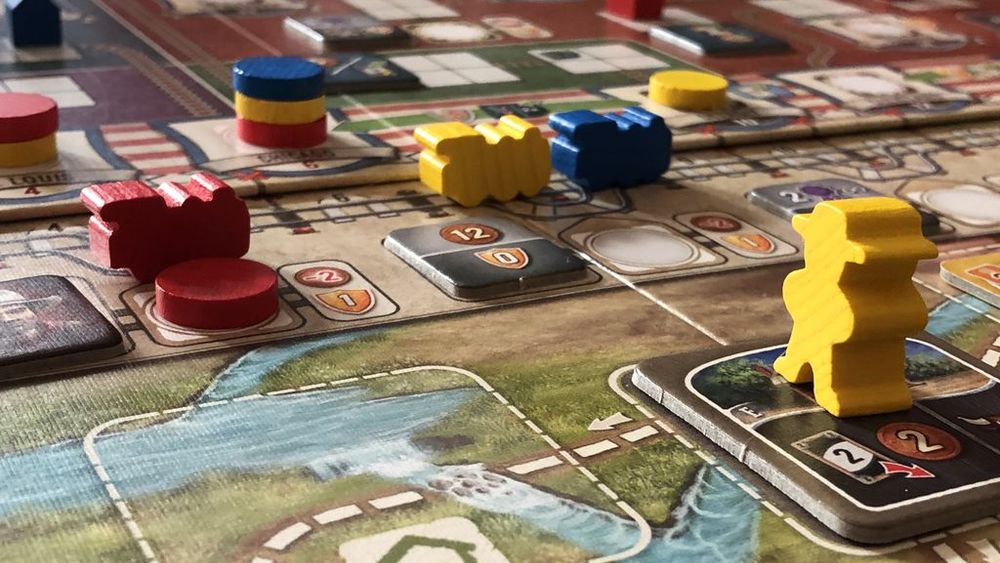
What’s New in the Second Edition?
The second edition of Great Western Trail isn’t just about new artwork and polished rules; it’s a thoughtful revision that adds layers to the gameplay. For starters, the player board received a redesign that not only looks sleeker but also improves functionality. The engineers behind this edition have reworked and clarified some of the original rules, streamlining the game experience and making it more intuitive for both newcomers and veterans.
But it’s not all cosmetic; the inclusion of new buildings and the adjustment of existing ones have shifted the way we strategize on the trail. Strategic flexibility is heightened, and with it comes the thrill of discovering new synergies and tactics. The evening we introduced the second edition to our group, the air crackled with excitement. We strategized over new routes, and laughter echoed whenever someone unveiled a fresh, crafty move.
The second edition of Great Western Trail adds layers to the gameplay, with a redesigned player board, clarified rules, and new buildings that heighten strategic flexibility and create excitement in the game.
Is the Upgrade Worth It?
“Is the upgrade worth it?” This question echoed through my gaming group as much as it must be doing in the broader gaming community. Here’s the thing – if you’re someone who cherishes quality components and nuanced improvements, then yes, the second edition is a worthwhile investment. From the detailed illustrations to the redesigned player boards, the tactile and visual upgrades cannot be understated.
Newcomers will undoubtedly appreciate the refined clarity in rules and game flow. For fans of the original, it breathes new life into a familiar path. Do these changes revolutionize the game? Not drastically, but they do sharpen it. During a recent game night, one particular friend – an avid collector and merciless strategist – confessed mid-game that the second edition had rekindled his love for Great Western Trail. If your gaming shelf has space for one more box and your heart holds affection for those dusty trails and the clang of cowbells, this upgrade might just be for you.
However, let me tell you, it is not an all-or-nothing affair. The original holds its charm, its challenging landscapes as engaging as ever. Yet, on the balance of aesthetics, smoother gameplay, and the allure of exploring new strategies, the second edition carries the day for those willing to journey back to the trail with heightened anticipation. It may not be a mandatory upgrade, but for the devotee looking to evolve their gameplay experience, it offers more than enough to warrant consideration.
Criticisms and Praise
Diving into the heart of any board game review, we uncover the delicate interplay between criticism and adulation. Great Western Trail is a masterpiece that has corralled its fair share of both. The scrutiny it faces can be as rough as a cattle drive but often reveals the robustness and depth that keep players coming back for more.
Common Critiques of Great Western Trail
In the realm of Great Western Trail, players have encountered thorny patches alongside the lush pastures. A common critique revolves around the endgame, which some claim can feel anticlimactic, with black disks limiting your last strides to victory. The original game sometimes exhibits what’s known as a runaway leader issue – a few bad moves early on could brand your game with the hot iron of defeat.
Another nettling bramble has been the setup and teardown times, which can be as long as the trail from Texas to Kansas City itself. It’s a fiddly experience, one that sometimes makes the game feel more like chores on the ranch than a relaxing evening. These thorns in the side are not enough to sully the overall experience, but they are prickly enough to warrant mention, as they occasionally rub even the most patient ranchers the wrong way.
The endgame can feel anticlimactic due to the presence of black disks and a potential runaway leader issue, while setup and teardown times can make the game feel like chores rather than an enjoyable experience.
Highlights and Acclaims from the Gaming Community
But for every critique, there is resounding praise echoing through the gaming halls. Great Western Trail has roped in acclaim for its strategic depth – so vast that it could rival the open plains. It has been lauded for its innovative take on deck-building that feels as fresh as a sunrise over the prairie. Players appreciate the multitude of victory paths, each as viable as the next, allowing for a new adventure with each game.
The sheer joy of crafting your strategy and watching it unfold cannot be overstated, and the engagement it demands makes every turn as tantalizing as the next. The game’s theming and mechanics are so well integrated that you can almost smell the leather saddles. Great Western Trail earns its spurs by offering a rewarding experience for those who are willing to saddle up and ride into its strategic depths.

FAQs
1. What makes Great Western Trail unique compared to other strategy board games?
Great Western Trail stands out in the world of strategy board games thanks to its unique combination of deck-building, tile placement, and movement mechanics. The game challenges players to strategically maneuver their herds across a variable board, ensuring that no two games are the same. It’s the intricate blend of planning, adaptation, and execution that sets Great Western Trail apart from the herd.
2. How long does a typical game of Great Western Trail take to play?
A typical game of Great Western Trail takes around 75 to 150 minutes to play, depending on the number of players and their familiarity with the game. It’s a commitment, like a leisurely trail drive, but one that delivers a rich, rewarding experience that is worth every minute.
3. Can Great Western Trail be enjoyed by casual gamers or is it for hobbyists only?
Great Western Trail can be enjoyed by both casual gamers and hobbyists, though it shines brightest with those who relish a deeper strategic challenge. Newcomers to board gaming might need a few rounds to fully appreciate the game’s intricacies, but the game’s immersive experience is accessible to anyone with the patience to learn.
4. Are there any expansions available for Great Western Trail?
Yes, expansions are available for Great Western Trail, and they offer new variations and challenges. These expansions can introduce new mechanics, maps, and strategies that can refresh and deepen the gameplay for experienced players looking for new frontiers.
Conclusion
After countless rides along the rails and trails of this game, one thing remains clear: a Great Western Trail review barely scratches the surface of its lush, strategic landscape. Each game is an expedition that reveals the richness of decision-making and the tension of competition. Great Western Trail review discussions often revolve around its complexity and depth, qualities that cast a long shadow over many games in its genre.
Board gaming, my friend, is an evergreen journey, and Great Western Trail is a path well-worth travelling. Whether you’re a seasoned gamer or a bright-eyed newcomer, the experience it offers is as fulfilling as it is demanding. So saddle up, for the trail awaits, and the question looms – will your strategy lead to prosperity, or will you be left kicking dust at the back of the herd?
Reflect on your moments with the game. The times when strategy trumped luck, the satisfaction of perfecting your cattle deck, or that cunning move that left your fellow players in awe. Great Western Trail has carved its name in the annals of gaming history, etched by the hands of those drawn to its strategic call.
May your gaming experiences be rich, your strategies shrewd, and your trail ever winding. Until we meet again at the game table, happy trails, amigo.
Lucas
More Boardgame Reviews:
This article uses material from BoardGameGeek and is licensed under the Creative Commons Attribution-Share Alike License.

